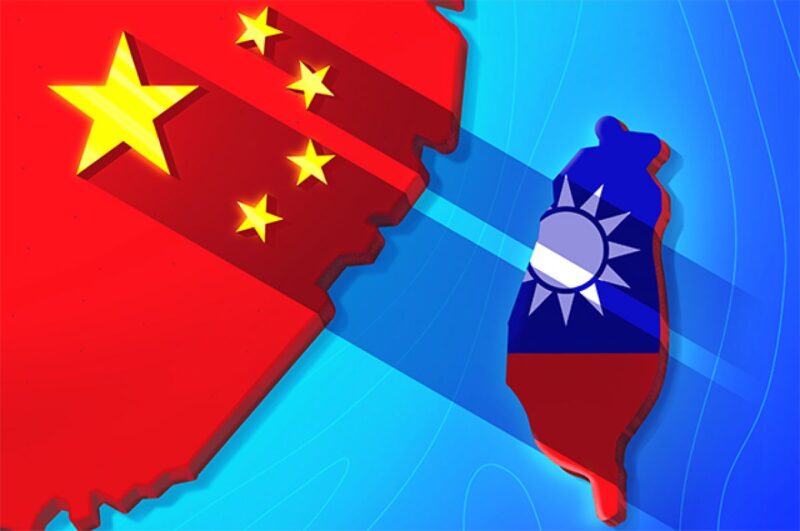In the shadow of Russia’s war with Ukraine, another long-standing confrontation looms in Asia—between China’s communist government and Taiwan’s nationalist leadership. Beijing hasn’t controlled Taiwan since 1949 but still sees it as a breakaway province and has vowed to reclaim it by force. Let’s examine whether this goal is realistic and how China is preparing for such an operation.
Expanding Military Capabilities and a Revolution in Defense Construction
Taiwan is a partially recognized state, maintaining diplomatic ties with 13 UN member countries. However, Beijing actively opposes any foreign engagement with the island. Despite this, under democratic governance, Taiwan has become one of the region’s most successful economies—one of the key reasons China remains determined to reclaim it.
For decades, every communist leader, including Xi Jinping, has pledged to bring Taiwan under Beijing’s control, even through military means. In his 2025 New Year’s address, Xi emphasized that people on both sides of the Taiwan Strait belong to the same family, calling reunification an inevitable trend of the times.
Analysts agree that China has been expanding its military capabilities for at least two decades, specifically to prepare for an invasion. Evidence includes advancements in ballistic missile systems, upgrades to fighter jets, and the expansion of the world’s largest navy. Under Xi’s leadership, this push continues—China is constructing at least five specialized barges designed for Taiwan’s rugged coastline. These barges can transform into bridges up to 120 meters long, marking a major shift in military engineering. Additionally, China’s naval exercises around Taiwan, according to U.S. Space Force Brigadier General Anthony Mastalir, increasingly resemble rehearsals for an actual invasion.
Challenges Facing a Chinese Invasion
Numbers tell a striking story: China’s military dwarfs Taiwan’s, boasting 2 million personnel versus Taiwan’s 169,000. In ground forces alone, China outnumbers Taiwan more than tenfold. However, Taiwan has a larger reserve force—1.6 million compared to China’s 510,000. In terms of military hardware, China leads in tanks (nearly 5,000 to Taiwan’s 750), aircraft, submarines, and artillery.
Yet, raw numbers don’t tell the whole story. China hasn’t engaged in direct combat since its 1979 war with Vietnam, leaving questions about its military’s real-world effectiveness. A Taiwan invasion would also pose logistical hurdles: amphibious landings require a narrow weather window when storms won’t disrupt operations, demanding thousands of transport ships. Securing air superiority would be equally complex—China would need to neutralize Taiwan’s air force and defenses while fending off potential U.S. reinforcements from bases in Japan and Guam. Meanwhile, Taiwan could sabotage key infrastructure, turning ports, tunnels, and beaches into fortified traps.
The U.S. Factor and Strategic Uncertainty
U.S.-Taiwan relations, governed by a 1979 law, are deliberately ambiguous. While Washington doesn’t officially recognize Taiwan as independent, it pledges to support and defend the island to maintain stability in the Western Pacific. However, Taiwan’s reliance on U.S. aid has grown more uncertain with Donald Trump’s return to political prominence.
China’s preparations for a potential invasion must balance complex land, sea, and air operations. But such a large-scale military buildup won’t go unnoticed by Taiwan or the U.S. The U.S. Institute of Peace warns that an invasion carries a “high risk of failure,” which could severely damage China’s global standing and undermine the Communist Party’s grip on power.
U.S. intelligence suggests Xi may be eyeing 2027—the 100th anniversary of China’s military—as a possible invasion deadline. However, Taiwanese analysts argue that as long as Trump remains in office, China will likely avoid overly aggressive moves. Xi’s priority, they say, is securing his regime’s stability and ensuring a smooth transition of power to his successor.
According to the Global Guardian think tank, a Chinese invasion is more likely between 2030 and 2040. Meanwhile, CSIS analysts predict that any such conflict would be devastating for all sides, resulting in heavy losses among Chinese, U.S., Taiwanese, and Japanese forces. Their modeling suggests that while the U.S. would likely emerge victorious, it would be at great cost—its military severely weakened, aircraft carriers sunk, and China’s modern navy, the world’s largest, left in ruins.




